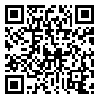BibTeX | RIS | EndNote | Medlars | ProCite | Reference Manager | RefWorks
Send citation to:
URL: http://hayat.tums.ac.ir/article-1-57-en.html

 , Shahnaz Golian Tehrani1
, Shahnaz Golian Tehrani1 
 , Anooshirvan Kazemnejad2
, Anooshirvan Kazemnejad2 
 , Fatemeh Sadat Hosseini Baharanchi3
, Fatemeh Sadat Hosseini Baharanchi3 
 , Bagher Minaee4
, Bagher Minaee4 
 , Reza Bekhradi5
, Reza Bekhradi5 
 , Ziba Raisi Dehkordi *
, Ziba Raisi Dehkordi * 
 6
6
2- Professor, Dept. of Biostatistics, Tarbiat Modares University, Tehran, Iran
3- Eyvanakey Institute of Higher Education, Semnan, Iran
4- Department of Anatomy and Histology, School of Medicine, Tehran University of Medical Sciences, Tehran, Iran
5- General Physician and Head of Clinical Research Department of Bareej Essence Pharmaco Co, Kashan, Ir
6- MSc. in Midwifery, Dept. of Midwifery, School of Nursing and Midwifery, Shahrekord University of Medical Sciences, Shahrekord, Iran
Background & Aim: Infants are very sensitive and special attention is needed to take care of their physical and mental health. Some studies showed that massage by parents can improve infants&apos sleep quality. The aim of this study was to compare the effect of massage with sunflower oil or sesame oil on infants&apos crying and sleep times.
Methods & Materials: This triple-blinded clinical trial was conducted on 120 infants who were 10-15 days old, full-term, single, exclusively breastfed and with no history of hospitalization. The infants were assigned randomly into three groups of sunflower oil massage, sesame oil massage and massage with no oils. Mothers administered 15 minutes of massage to their infants twice per day (morning and afternoon) for 28 days. Times of crying and sleep were measured by a parents&apos information form at baseline, and at the end of the first, second, third, and fourth weeks of the study. Data were analyzed using the repeated measures ANOVA.
Result: Within four weeks of following, decreasing pattern of infants crying time was not significant (P=0.18) however, the mean of crying time between the three groups was significant (P=0.007). The interaction effect of crying time and groups was not significant (P=0.18). Increasing pattern of infant sleep time was statistically significant in the fourth weeks of the following (P<0.001) however, the mean of sleep time between three groups was not significant (P<0.56). The interaction effect of sleeping time and groups was not significant (P<0.10).
Conclusion: Since there were not statistical significant differences between the infants&apos crying and sleep times between the three groups, and despite the fact that increasing pattern of infants sleep time is a normal pattern, it is not possible to have a proper conclusion.
| Rights and permissions | |
 |
This work is licensed under a Creative Commons Attribution-NonCommercial 4.0 International License. |



